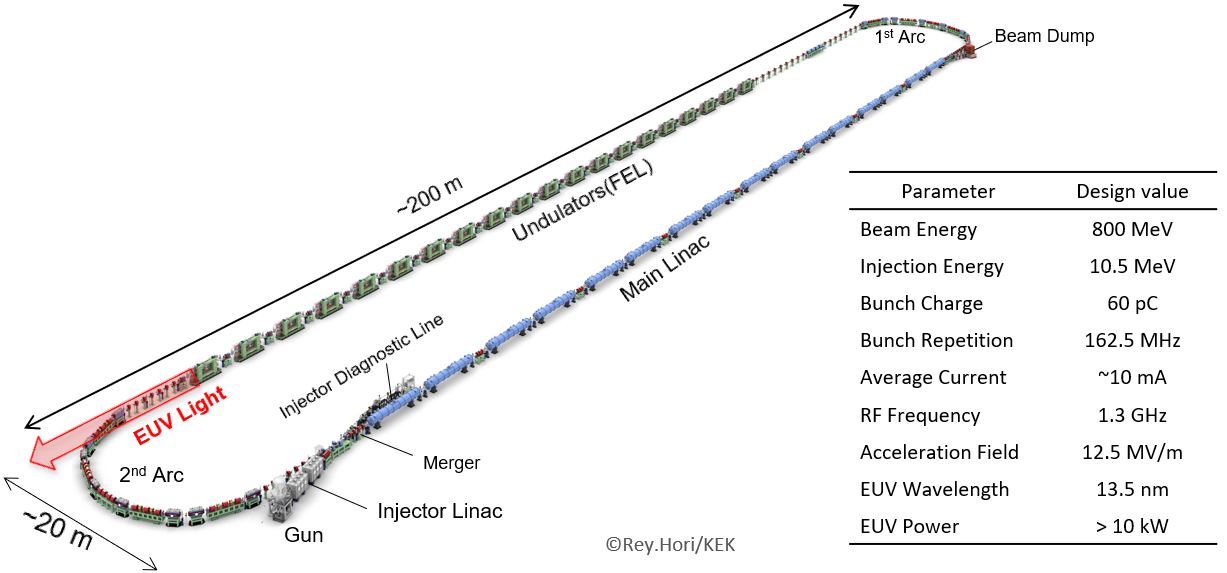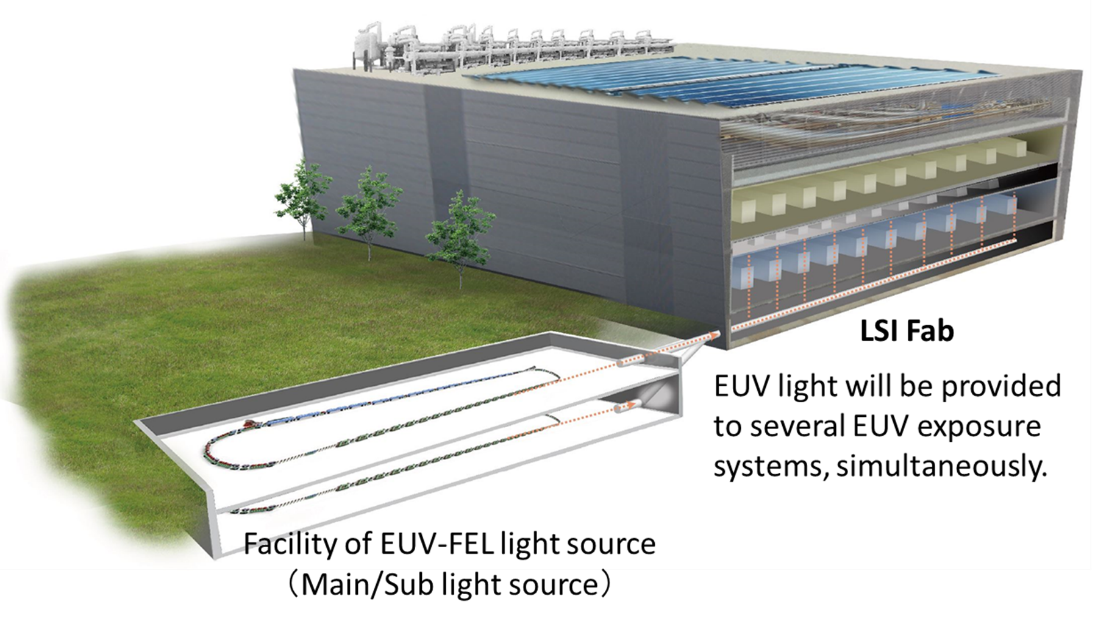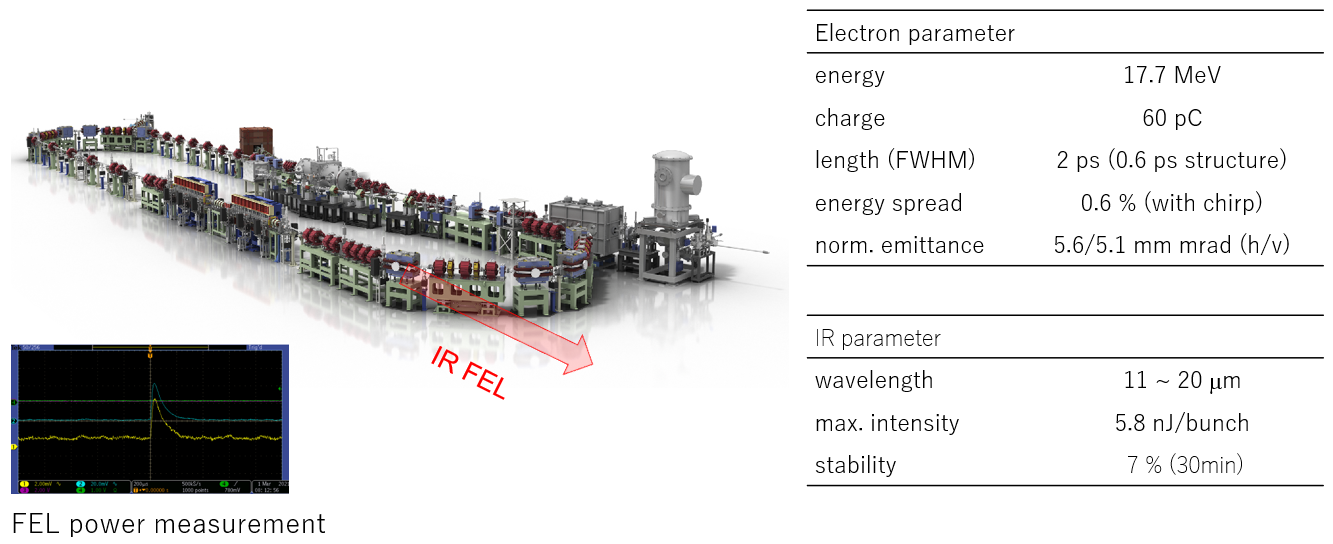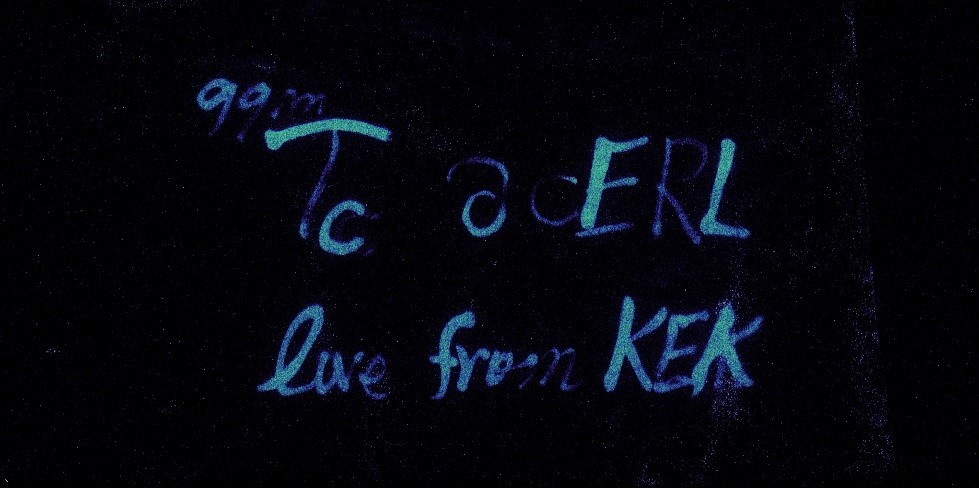Various application developments using superconducting accelerators
Research and development using high-current electron beams is being conducted at compact ERL for being useful to society.

from basic research to industrial use
Research and development using high-current electron beams is being conducted at compact ERL for being useful to society.

Semiconductors are at the heart of electronic products such as automobiles and home appliances. For many years, development of technologies for microfabrication of silicon semiconductors has been continued in order to achieve higher integration, higher performance, and lower power consumption. Lithography is a technology used in this microfabrication process, which forms patterns on silicon wafers using a mechanism similar to that used to develop photographs. The current state-of-the-art microfabrication uses an ArF excimer laser with a wavelength of 193 nm as its light source. For further microfabrication, extreme ultraviolet (EUV) lithography, which has a wavelength more than one order of magnitude shorter, is under consideration. Currently, 250W output power is available in the LPP (laser-produced plasma) method at the wavelength of 13.5nm, which is in the EUV region. We are performing the accelerator design and simulation aiming at 10kW intensity with an ERL-based FEL light source.


Resins such as polyethylene, polycarbonate, and polyvinyl chloride have different characteristics and are widely used in industrial and commercial parts around us. Laser fabrication is used for welding and cutting, and is suitable for processing complex shapes and high precision. Welding and cutting use the heat generated when the resin absorbs the laser of a carbon-dioxide laser with a wavelength of 10.6μm. However, since resins have different absorption spectra, FELs with tunable wavelengths can be used to improve fabrication efficiency.
The infrared FEL at the compact ERL employs SASE FEL, aiming at high-current operation and high-power CW-FEL using energy recovery. Through beam commissioning, we are also conducting fundamental research for the realization of high-power EUV-FEL.

When pharmaceuticals bound with radioisotopes are administered to the body, the radiation can be measured and used to make a diagnosis because of its dense concentration near pathogens. This is called nuclear medicine diagnosis and is mainly used for the diagnosis of cancer. Technetium 99mTc, a representative radioactive isotope, has a short half-life of 6 hours, and its raw material, molybdenum 99Mo, is imported from overseas. Domestic production is expected because imports may become difficult depending on the world situation. Although research reactors are the main method of production, production using accelerators is also being considered both domestically and internationally. In the case of electron beam irradiation, it is possible to produce approximately 0.5 TBq/day from natural molybdenum at the beam energy of 20 MeV and the beam current of 10 mA, and it is expected that a few accelerators like compact ERL scale will be enough to meet domestic demand.
Molybdenum dissolution and high-purity technetium extraction experiments were conducted under joint research with Chiyoda Technol Corporation. The photo shows an image of radiation using an imaging plate written by the extracted technetium solution.

Asphalt pavement deteriorates over time, causing rut digging and cracking. Maintenance for this is required annually, which is a major burden for the Ministry of Land and Infrastructure. Research reports have emerged showing that mixing additives into asphalt in advance can extend its life by irradiating it with electron beams. We are irradiating samples with electron beams to analyze the asphalt hardening.

Nanocellulose, a new material produced from wood and pulp, is five times stronger than steel but one-fifth the weight, making it lightweight, strong, and elastic. It is expected to find a variety of applications now. Nanocellulose production requires the fiber reduction of wood tissue to nano size, but energy saving, cost reduction, and mass production are issues to be addressed in order to widely implement nanocellulose in society. Therefore, we are focusing on the possibility to improve the efficiency of nanocellulose production using a high-current electron beam to cut and destroy wood tissue and components with a dense and tough cell wall structure.

Conventional superconducting accelerating cavities are fabricated from niobium metal (Nb), which is easy to fabricate. To reduce power consumption, they require to be cooled down to 2 Kelvin (-271 degrees Celsius), and liquid helium plant must be prepared. The best way to reduce the size and power consumption of the cooling system is to raise the cooling temperature for the cavity. Therefore, niobium-3 tin (Nb3Sn) compounds are attracting attention as a new cavity material, and we are developing them under international collaboration. This next-generation superconducting accelerating cavity is expected to make high-current electron beam irradiation facilities useful in a wide range of industrial applications.

© 2022 KEK iCASA cERL